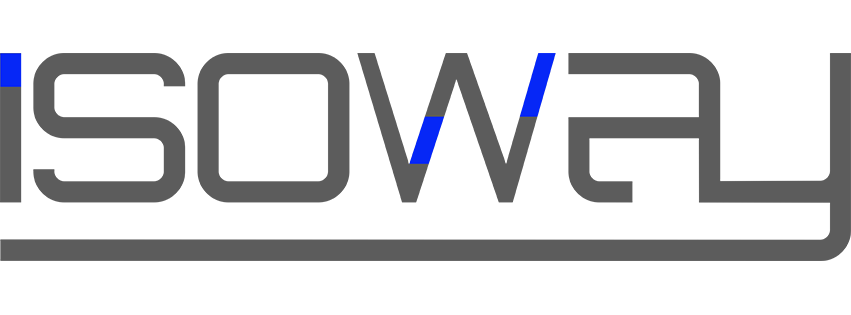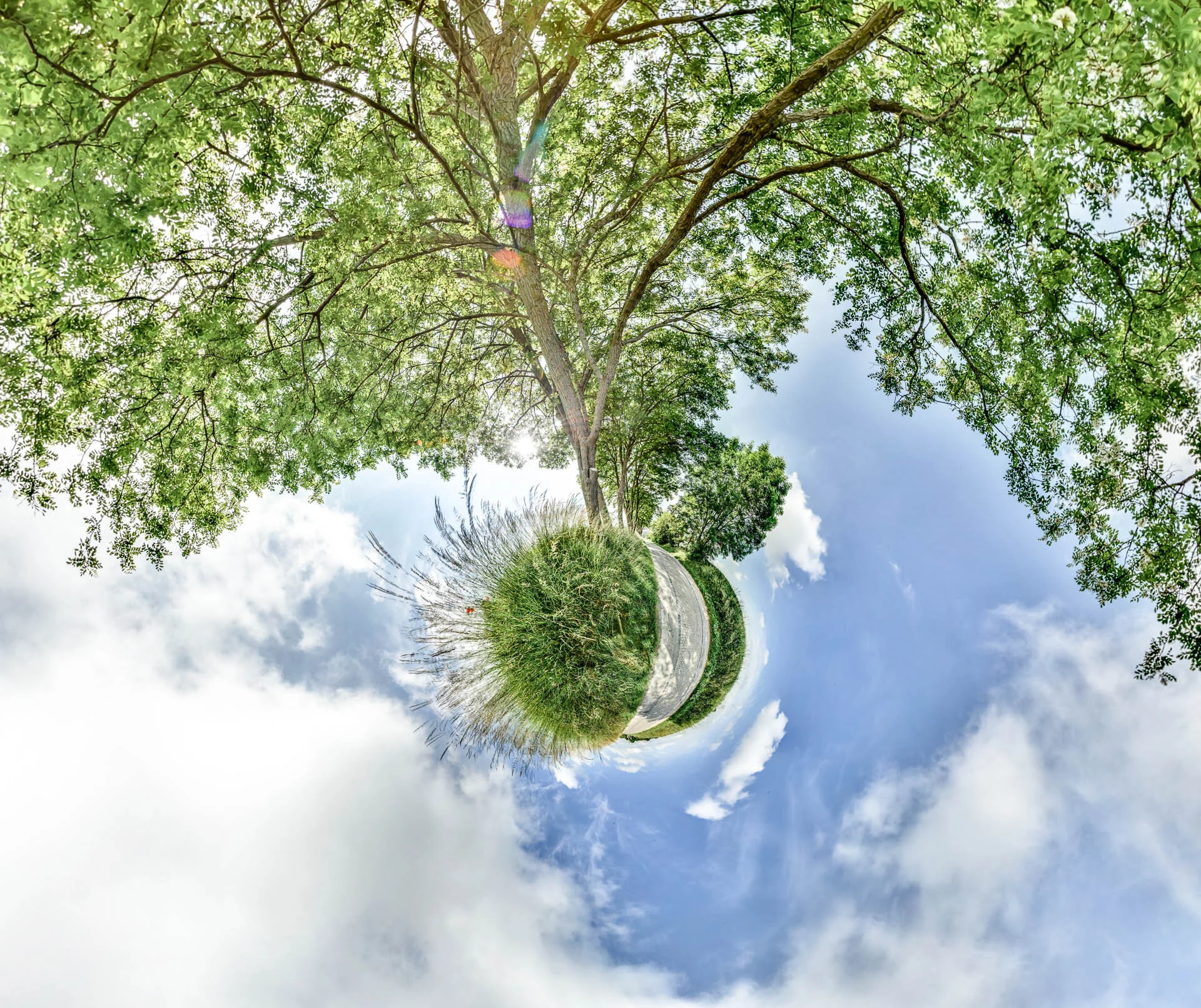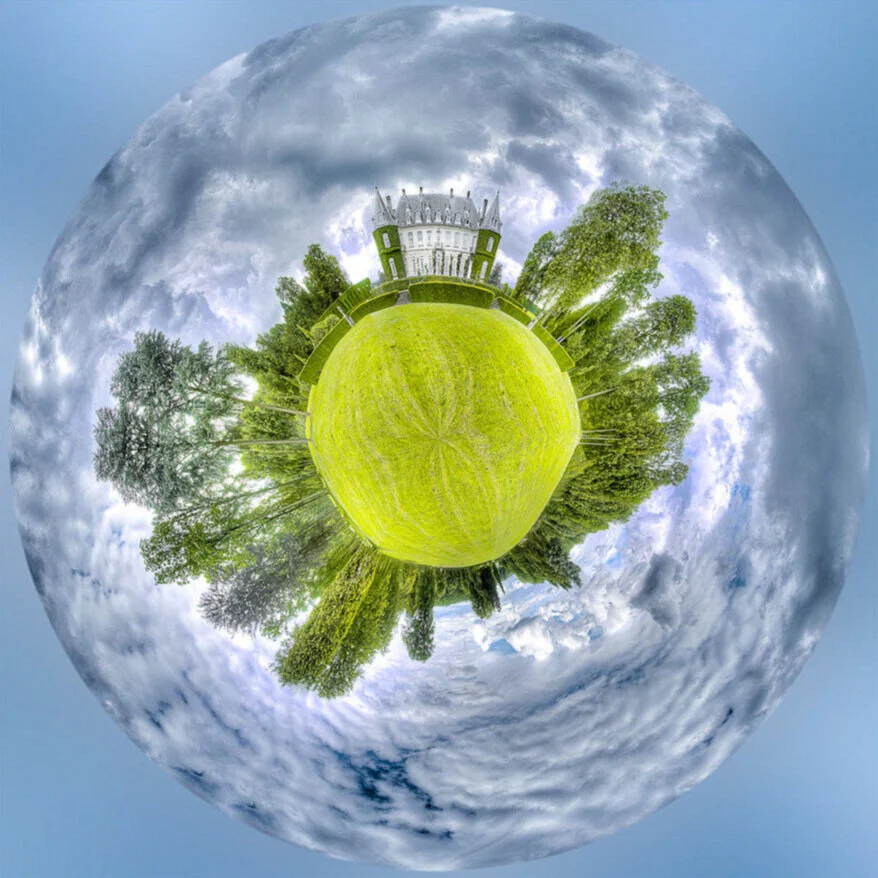Tiny planets: perfect photos for creative and effective communication
The best tiny planets photographers at your company's service! Dare to create strong, different images.
Photo tiny planet by Paul Marnef entitled: Etrange Chemin
The tiny planet or tiny planet starts out as a 360° panoramic photograph, assembled and transformed into a sphere-shaped image.
This intriguing and sometimes surprising effect is obtained from a series of photos captured and then assembled using editing software such as Photoshop or specific assembly programs such as (Autopano) and PTGui.
These shots reveal an original vision that focuses on showing unprecedented forms of landscapes, nature and urban spaces. Ideal photo creations for ethical and eco-responsible marketing plans and communication campaigns.
Photos tiny planets by Paul Marnef of the European Parliament in Brussels and in Strasbourg.
The tiny planets images and photos are highly poetic, looking a little like the planet in "The Little Prince ". To ensure that the final result lives up to our imaginations, they require great skill on the part of the photographer.
The effect is surprising and strange, at the crossroads of drawing, painting, computer graphics and photography.
tiny planet photo by Paul Marnef of château de La Hulpe
A brief history of 360° photography
The first panoramic camera (an Austrian cylindrograph) is thought to have appeared in 1841.
As early as 1845, Frédéric Martens or Friedrich von Martens, an Italian engraver and photographer, developed a camera with a wide field of vision for panoramic shots. He created daguerreotypes of the Seine in Paris.
The best-known cameras capable of producing panoramic images are the Linhof Technorama 612, Horseman 612 and 617, Silvestri, Plaubel, Widelux and Noblex.
With the advent of the 35 mm film format and advances in technology, new cameras were born: Noblex, FT, Hasseblad X Pan 1, Fuji G 617.
How do I create a tiny planet photo?
Step 1: create a panoramic image
A tiny planet is basically a panoramic photograph.
There are two ways to achieve the ideal result:
By cropping: simply tighten the shot in post-production.
This solution is very simple and perfect for sharing the image on social networks such as Facebook, Linkedin, Twitter or Instagram.By stitching: take a series of photos that overlap by around 30%, then stitch them together in post-production with stitching software to create a seamless panorama.
This solution delivers the best results and the highest image quality.
Our tips:
Vertical framing allows for greater height and higher resolution of the final photo.
Photos can be taken freehand (for landscapes), but the quality will be much better with professional equipment such as a tripod, a manual head(Nodal Ninja distributed by Fanotec, Manfrotto or Novoflex) or, for professional photographers, a robotic head(Seitz Roundshot, Clauss Rodeon, Nodal Ninja or Manfrotto).
For a perfect image, it is essential to rotate the camera and lens around a central point: the "nodal point" or "entrance pupil". By respecting this condition, each of the images that make up the panorama can be precisely connected.
Step 2: transforming a panoramic image into a tiny planet
We propose two methods for generating and creating a pretty tiny planet .
By Photoshop
This is the method used by most photographers:
Open 360° x 180° panorama.
Turn this panoramic photo into a distorted square using the menu: Image / Image size.
Then rotate to 180° using the menus: Image menu / Image rotation / 180°.
Finally, use Photoshop's polar coordinates filter via the menus: Filters / Deformation / Polar coordinates with the Rectangular in polar option.
This often requires a further 180° rotation (point 3 above).
Final touches to create the perfect image.
Through assembly programs
PTGui, (Autopano ) or the free Hugin software, which allows you to select spherical or tiny planet.
tiny planet photo by Paul Marnef of Villers wood in Walloon Brabant.
Imagination knows no bounds, and neither does creativity!
Don't hesitate to think outside the box and shoot your tiny planets in HDR (High Dynamic Range Imaging), or even Gigapixels.
Tiny planets are magical pictures: the technique has to be perfectly mastered, but there's always a small element of chance involved. The final result is never known at the outset, and that's often why the magic of discovery works.
You too can dare to be different with our professional photographers in Wallonia, Brussels, throughout Belgium and France, and give your communication, projects and events a different perspective thanks to our images and photos from tiny planets !
Fine art photo prints by Paul Marnef: discover the Imaginary Planets on paulmarnef360.com
Belgian artist-photographer Paul Marnef's Imaginary Planets offer a singular, poetic vision of our world. His works, available as limited edition fine art printsare meticulously reworked from original shots, combining contemporary photography, naturalist inspiration and visual imagination. His website paulmarnef360.com lets you discover and purchase these creations in a variety of formats, from small, affordable price to large-format and relief prints. Every tiny planet is conceived as a work in its own right, inviting contemplation, reverie and reflection on our environment. Art lovers, collectors and photography enthusiasts will find strong works, carefully printed in Fine Art, Chromaluxe or Alu Dibond finishes, to enhance any interior space.





